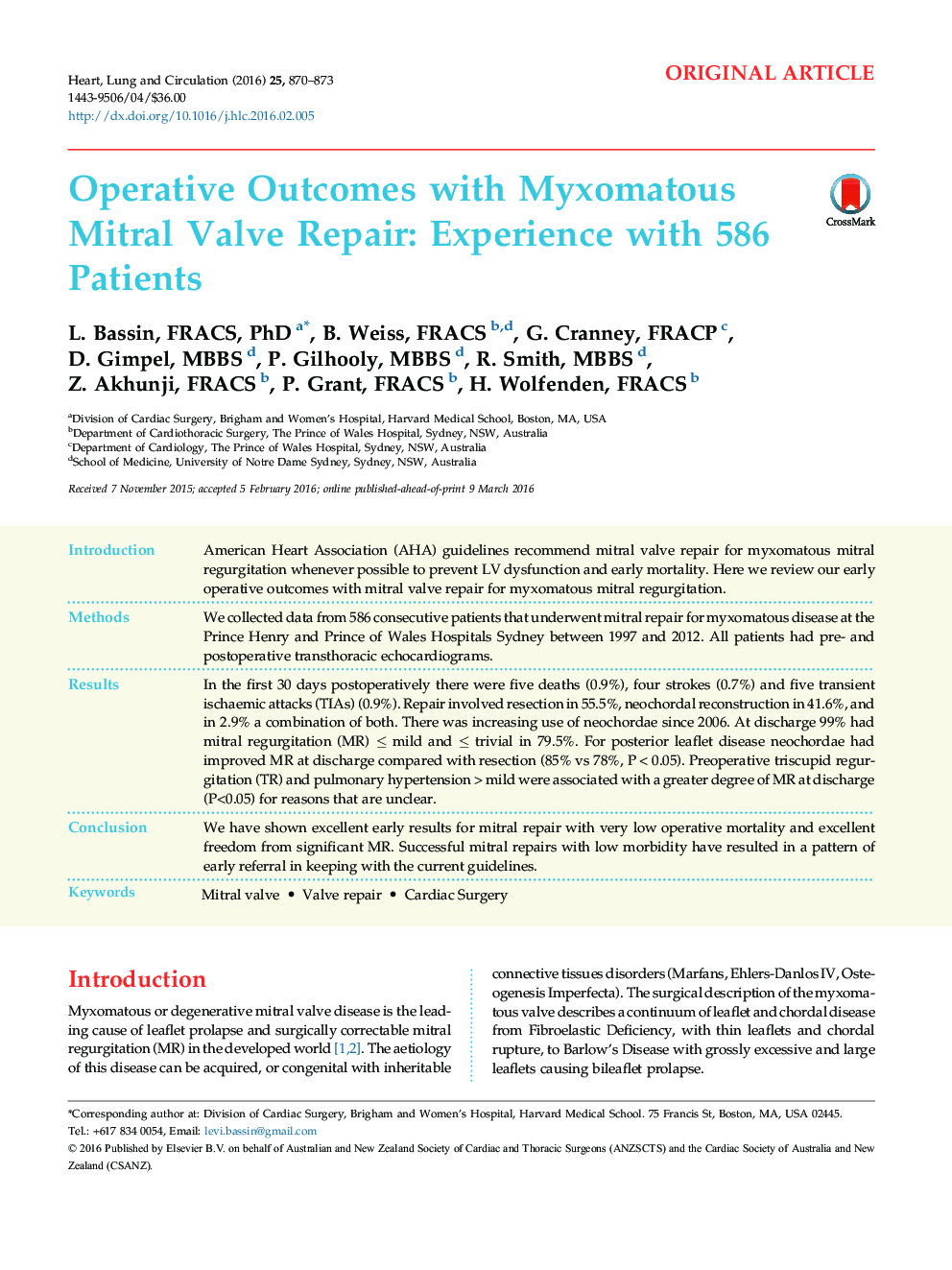| Article ID | Journal | Published Year | Pages | File Type |
|---|---|---|---|---|
| 2916636 | Heart, Lung and Circulation | 2016 | 4 Pages |
IntroductionAmerican Heart Association (AHA) guidelines recommend mitral valve repair for myxomatous mitral regurgitation whenever possible to prevent LV dysfunction and early mortality. Here we review our early operative outcomes with mitral valve repair for myxomatous mitral regurgitation.MethodsWe collected data from 586 consecutive patients that underwent mitral repair for myxomatous disease at the Prince Henry and Prince of Wales Hospitals Sydney between 1997 and 2012. All patients had pre- and postoperative transthoracic echocardiograms.ResultsIn the first 30 days postoperatively there were five deaths (0.9%), four strokes (0.7%) and five transient ischaemic attacks (TIAs) (0.9%). Repair involved resection in 55.5%, neochordal reconstruction in 41.6%, and in 2.9% a combination of both. There was increasing use of neochordae since 2006. At discharge 99% had mitral regurgitation (MR) ≤ mild and ≤ trivial in 79.5%. For posterior leaflet disease neochordae had improved MR at discharge compared with resection (85% vs 78%, P < 0.05). Preoperative triscupid regurgitation (TR) and pulmonary hypertension > mild were associated with a greater degree of MR at discharge (P<0.05) for reasons that are unclear.ConclusionWe have shown excellent early results for mitral repair with very low operative mortality and excellent freedom from significant MR. Successful mitral repairs with low morbidity have resulted in a pattern of early referral in keeping with the current guidelines.
